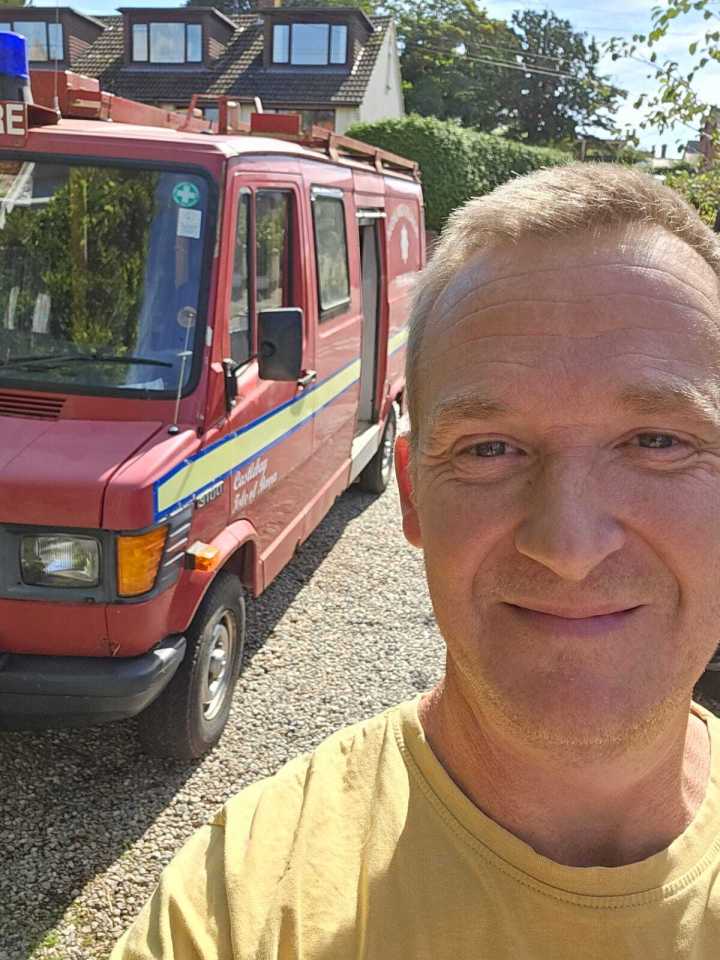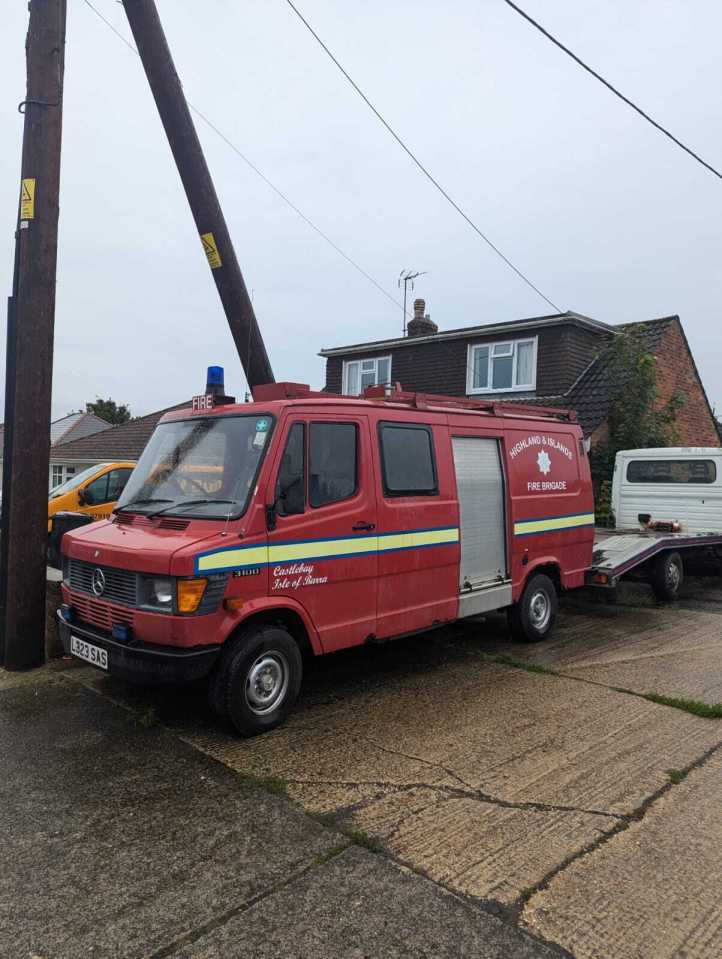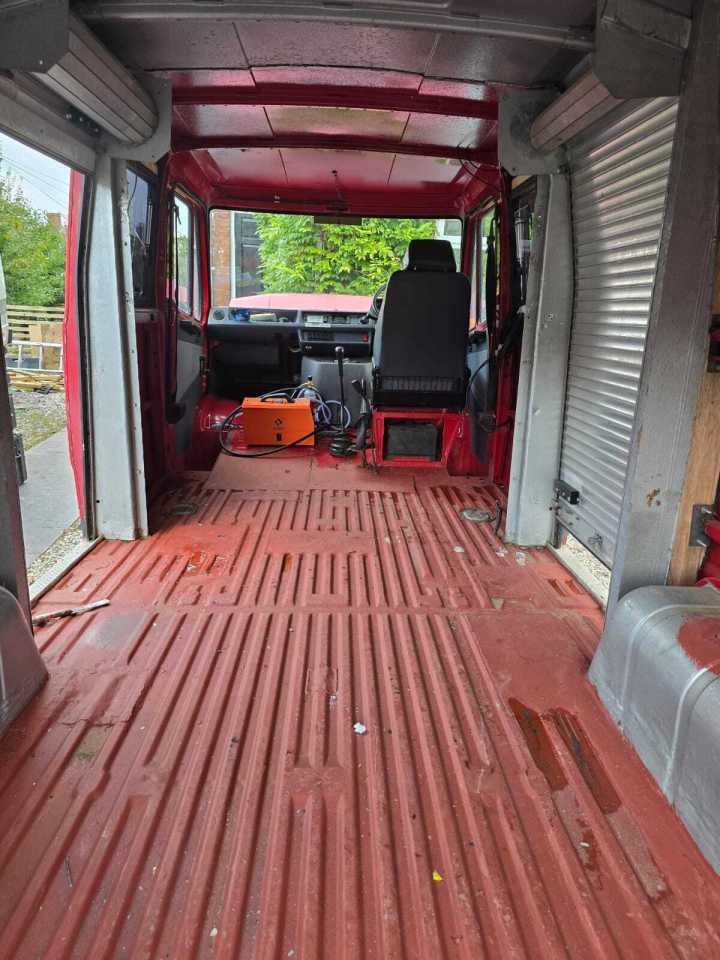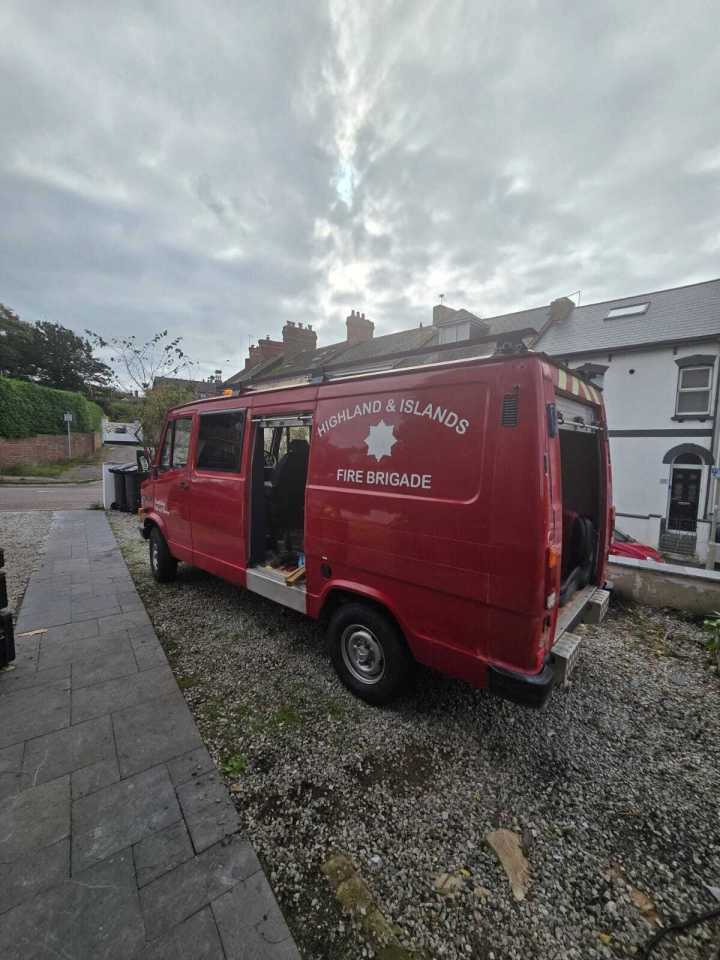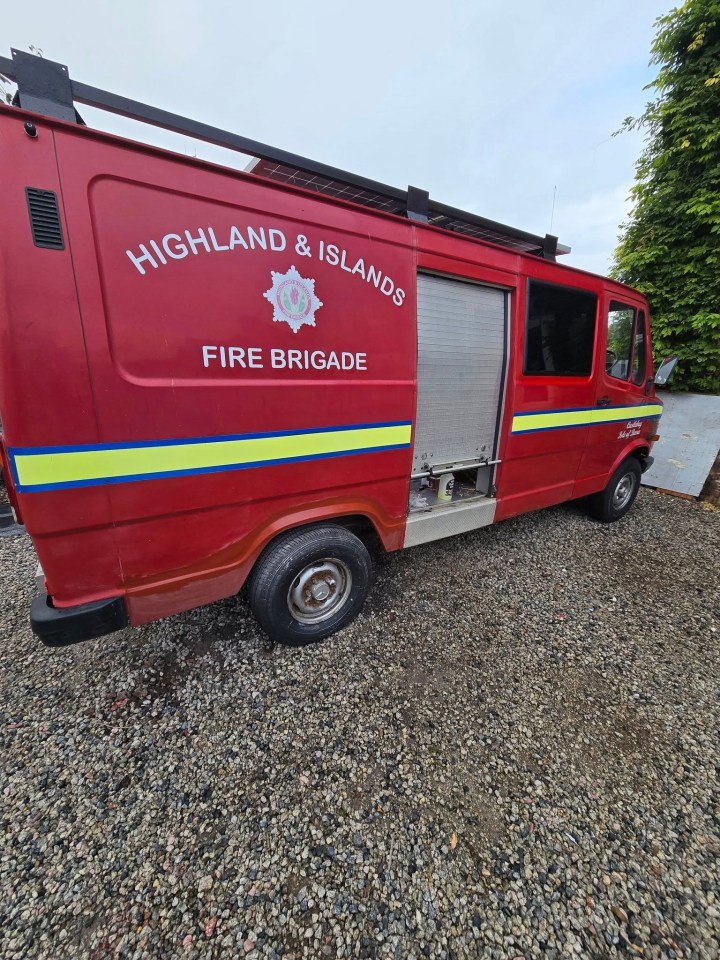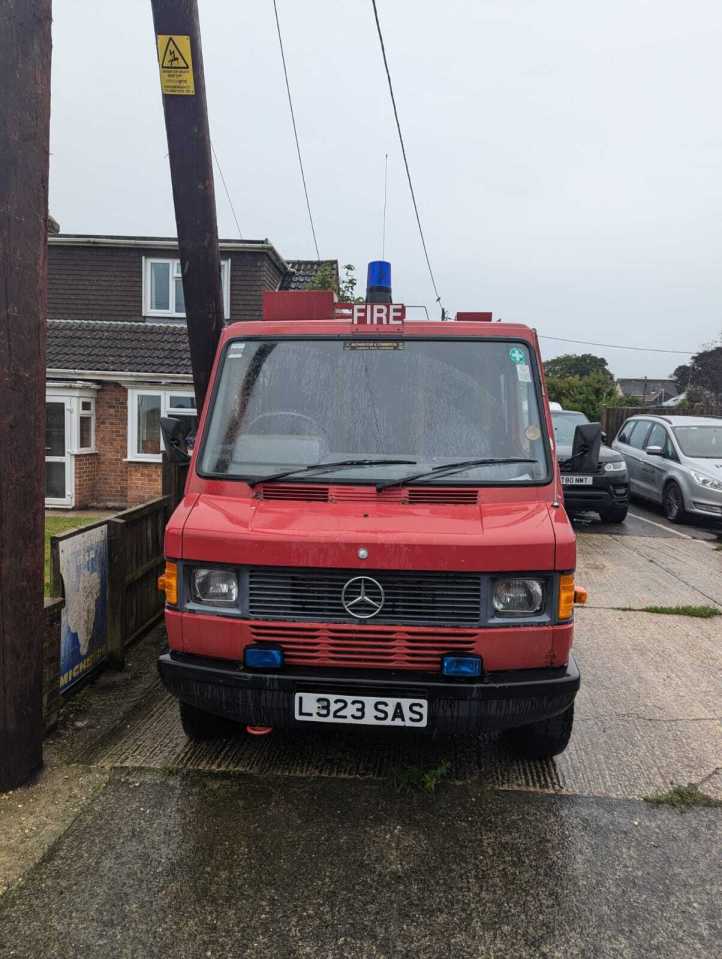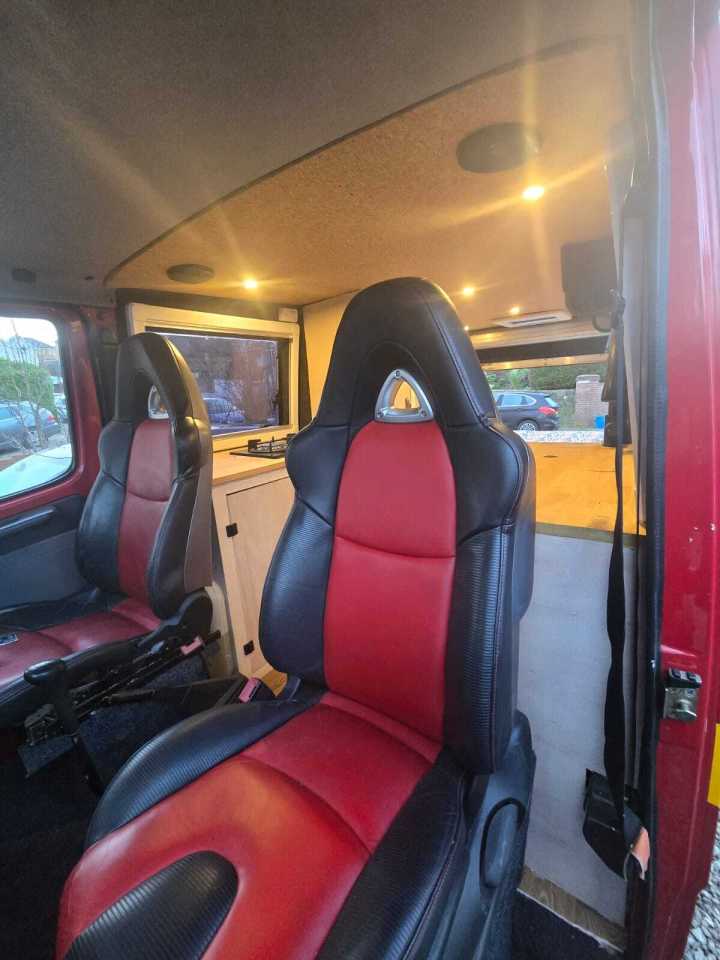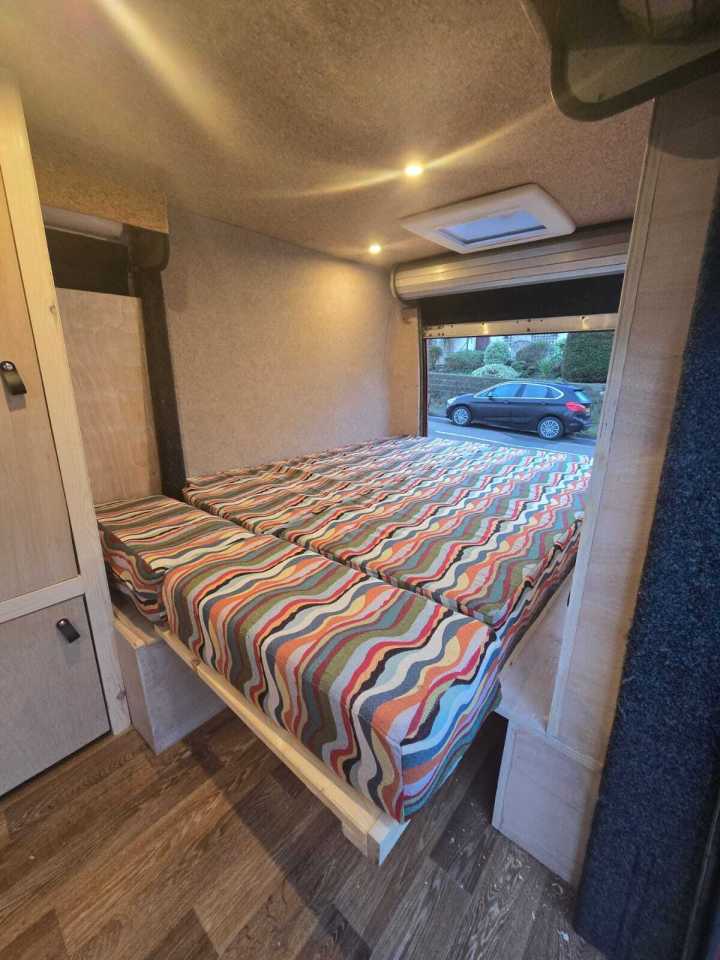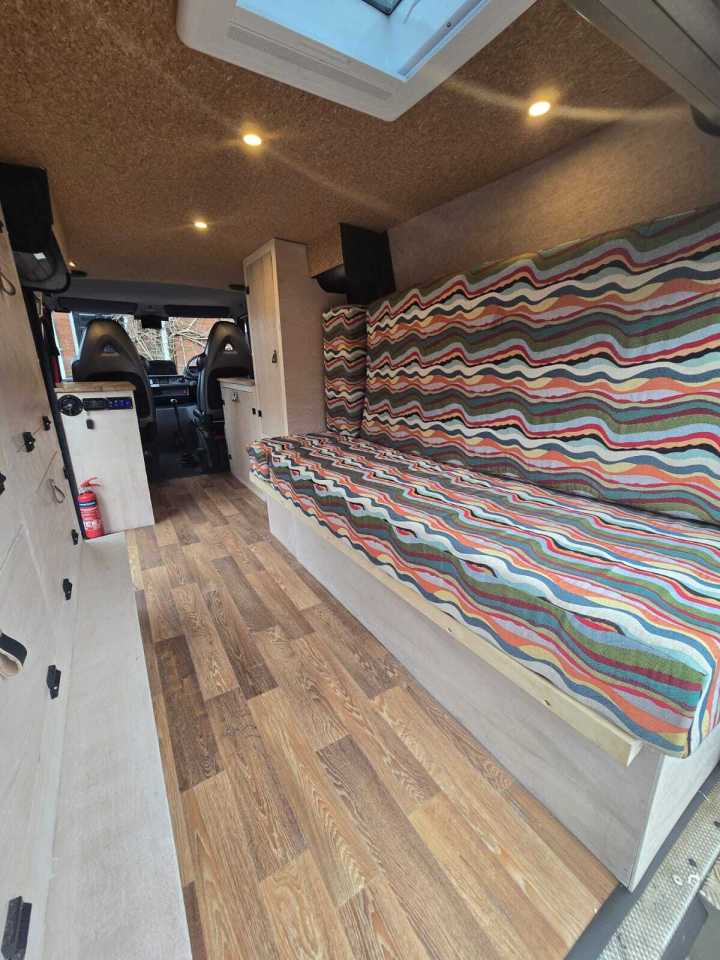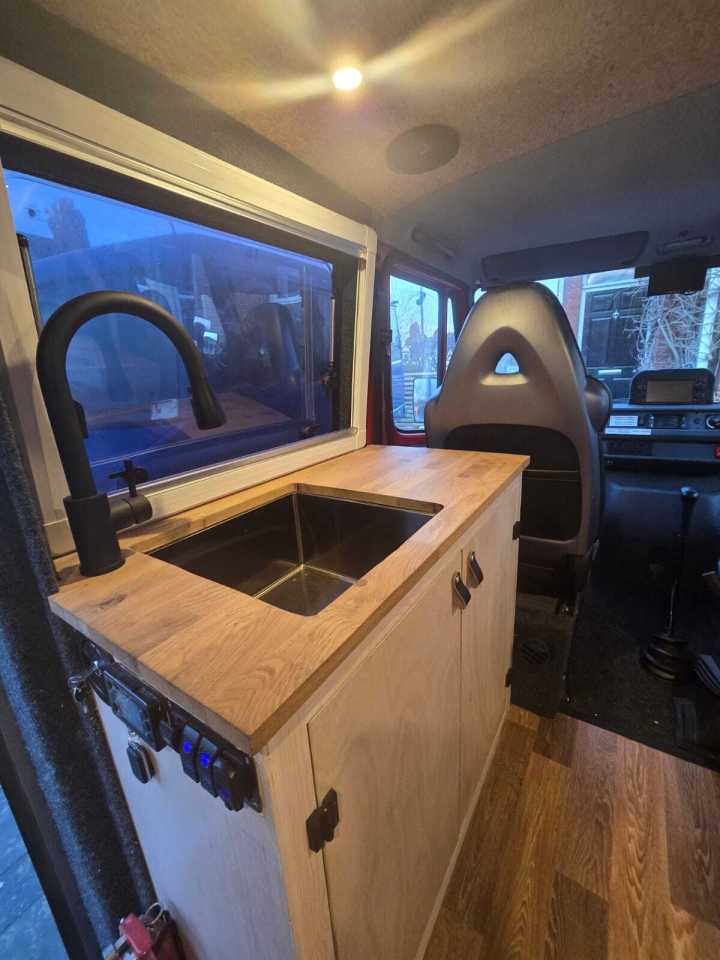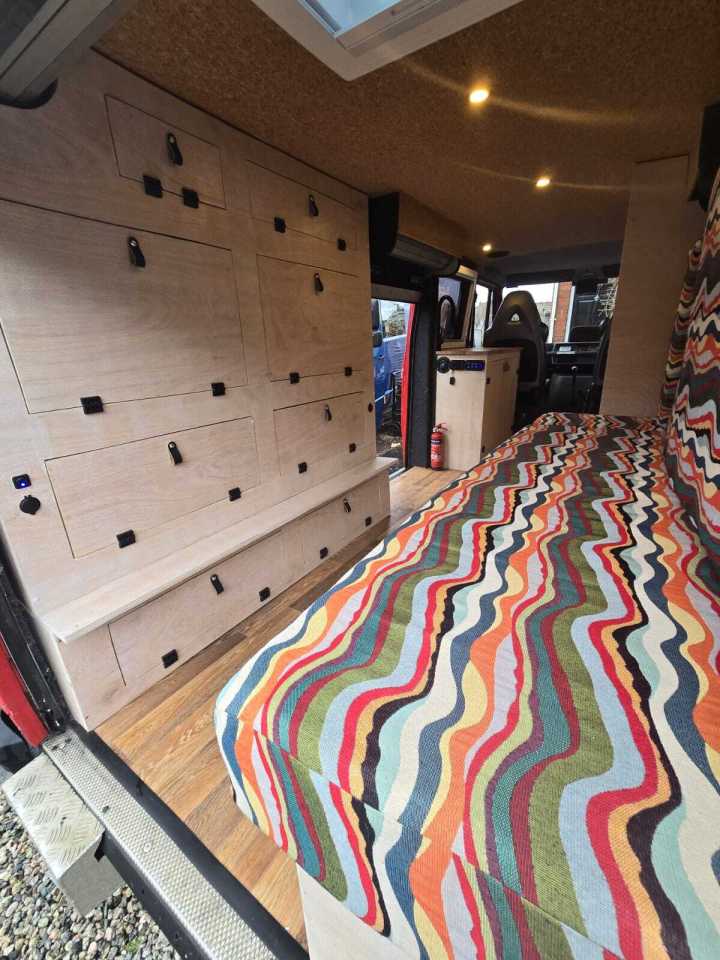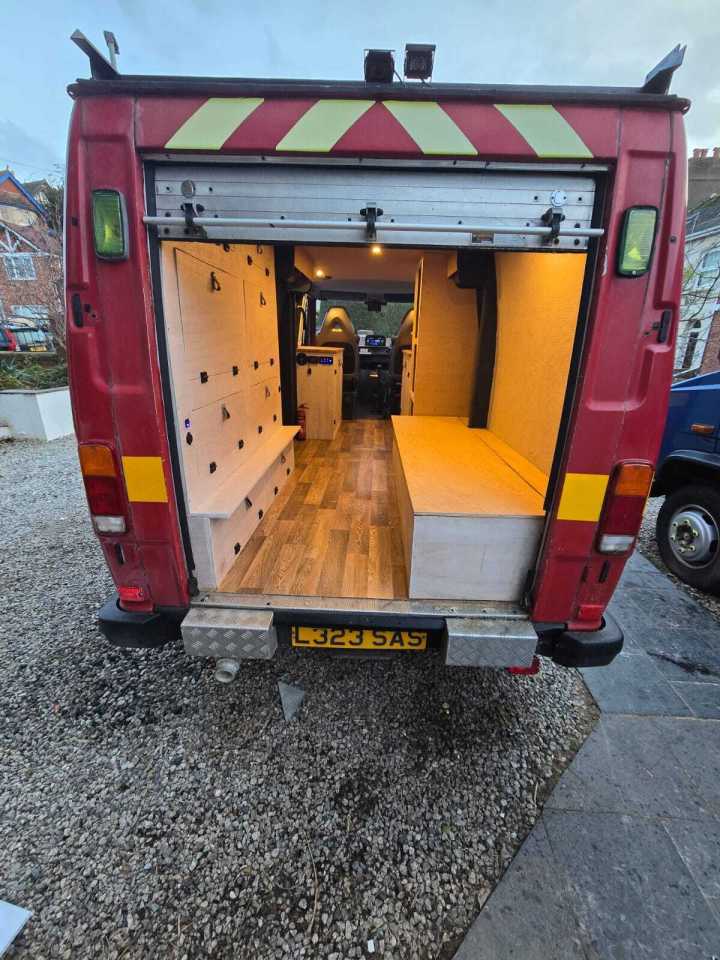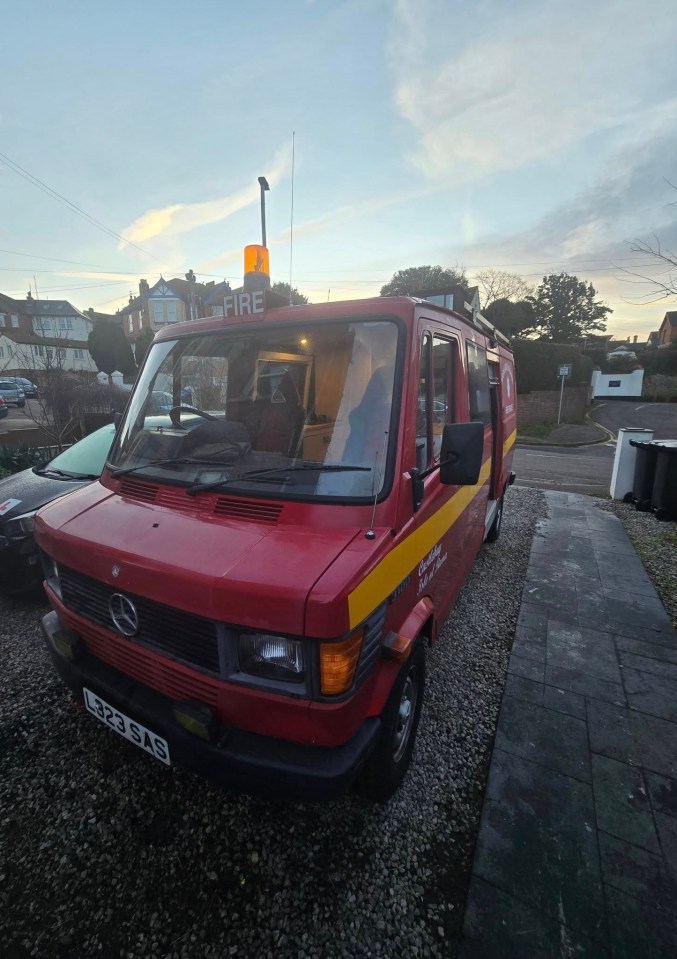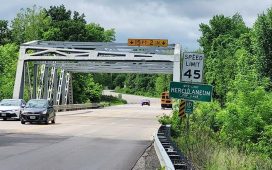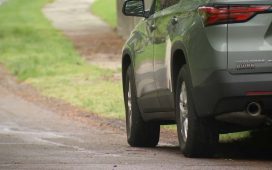AN old Scottish fire engine has been saved from scrap and will be back on the roads as a campervan.
The old appliance had spent over a decade racing to emergencies when it was used by the old Highlands and Islands Fire Brigade.
It was used by volunteer firefighters on the Isle of Barra since 1994 before it was retired in 2012 when the service was disbanded.
Since then it had spent time gathering dust and had even been a hen house before it found its way to a garage on the island.
The old Mercedes 310D was set for the scrapyard when it was bought and had more then 17,000 miles on the clock.
Ex-stonemason Simon Willmott, 52, had a change of career after Covid and began restoring old vans into campervans.
He has spent the past three years in his home-grown business and has transformed around 18 old vehicles into motorhomes, so the retired fire engine was an unmissable opportunity.
Simon snapped up the big red motor for £4,500k and took it back to his home in Exeter to get to work, spending ten weeks and £6,000 on the new project.
He told The Scottish Sun: “A garage had bought it as part of a group of vehicles from a collector and they called me because they know that I do camper van conversions and just said they had something interesting.
“I didn’t get round there for probably three weeks or so, at which point they had decided that they were going to scrap it or strip it all down for parts. So I turned up and said, don’t do that. I like it, I think we can do something with it.
“So I had it transported back to me down in Devon and then the real work began with uncovering all of the problems.
“It was actually mechanically it was really good, but the body work being so close to the coast for so long, it deteriorated.
“I think it was probably about 240 hours of welding done. I had to get it back up and running and hopefully keep it on the road for a lot more years to come.”
The crafty converter told how the interior ended up needing a lot of work before he could transform it into a home on the road.
He added: “I think everything that was useful was taken out by the fire service when it was decommissioned, and then whoever had it before me literally went in and stripped everything out, so it was awful inside.
“I think they’d had hens roosting in there given the amount of mess that was in there.
“The vehicle was actually empty when I bought it. All the fire service paraphernalia, the water tank and everything had already been stripped out by the previous owner. So it was just an empty van effectively when I got it.
“Before we could start anything else, we had basically the bottom six inches of the vehicle all had to be replaced, you know, and outer sills, door skins, chassis members at the rear as well.
“So an awful lot of work to do, but fortunately all the parts were readily available.
“And then once we’d got that done, which was probably about four weeks to get it up to speed bodywork-wise, we then started with the insulation and the furniture fit out and everything inside to make it into a little two-berth camper.
“It has a toilet, gas hob, everything you need for a weekend kind of camper, everything you need for going to the beach for the weekend.”
The inside of the van now looks completely unrecognisable from it’s fire service days.
Simon replaced the seating with brand new leather seats and installed fresh wood flooring throughout the back of the van.
It now has a funky-patterned couch with folds down into a double bed.
There is now plenty of storage space in a three shelf cupboard, which can also be accessed from the outside using the rescue vehicle’s roll-up door.
And there is plenty of space in the EIGHT storage cubbies opposite the couch.
And life on the road will be helped out with the sink and gas hob that Simon installed.
Dad-of-four Simon is keen to maintain the fire engine’s history, so despite the inside’s transformation, the exterior has remained mostly the same.
He said: “We had to decommission the blue lights. You can’t have the blue lights or the horns if it’s not in the fire service.
“We disconnected the [siren] horns and we changed all the blue lights to orange lights, so just like a service vehicle.
“Then we had to take the stripe off the side. It’s called the Battenberg stripe, which the emergency services have. Had to take that off and use a different colour, although a very similar colour, to replace it.”
Although he has been allowed to keep some parts of the history.
The engine is still painted bright red with a yellow stripe and still has it’s original branding.
He added: “We didn’t want it to look like a camper van. We wanted it from the outside just to look like it always did, like a fire engine.
“Because the Highlands and Islands fire service had been disbanded, we were able to keep the Highlands and Islands livery on the back.
“We’ve got to keep a bit of the vehicle’s heritage alive, that kind of thing.”
He has since sold it to a new owner for £16,000 reckons despite the vehicle’s long lifespan, it has plenty of life left in it.
He said: “Everybody wants to talk about it when they see it, everybody wants to chat.
“As soon as you pull up on a campsite or into a car park, everybody comes over to want to have a look inside and have a chat about where it’s been and is it really still on the road?
“Every single mile had been logged. So we knew exactly what it had done. We’ve got the log book that says if it was a chimney fire in a house up the road or if it was attending a school event or anything else, it was all logged.
“So there was a really good history with it. And it’s obviously been really well looked after. But I think in the time since it left the fire service in 2012, I think it had sat in a barn slowly rusting away.
“But obviously with 17,000 miles it’s probably got another 200,000 miles in it.”

